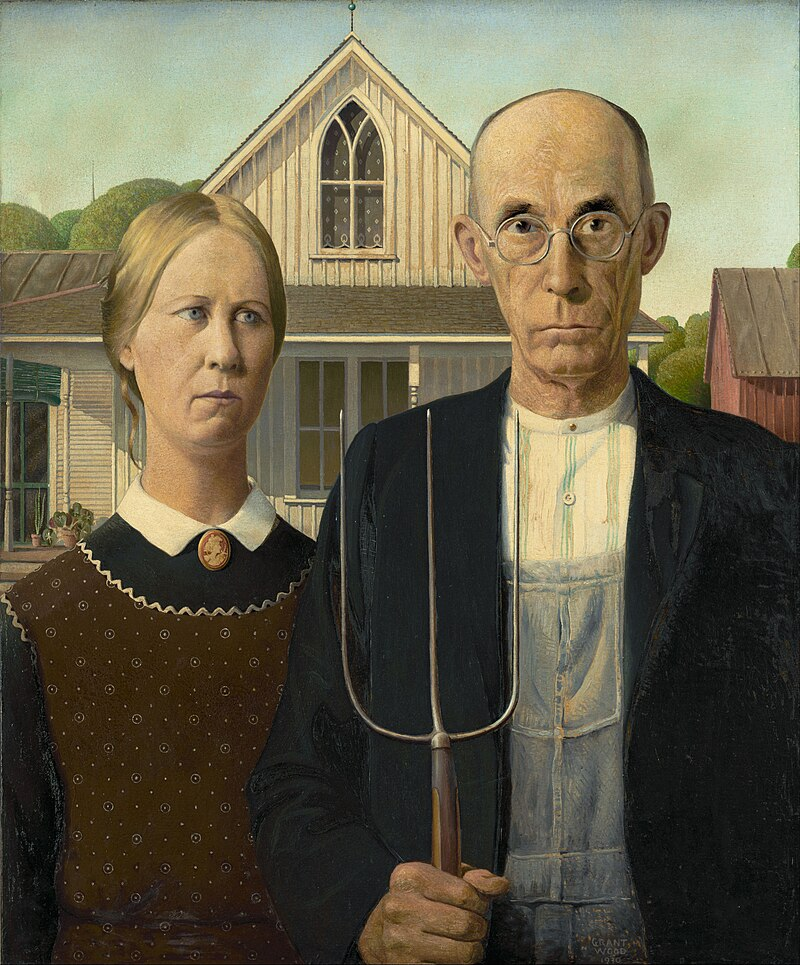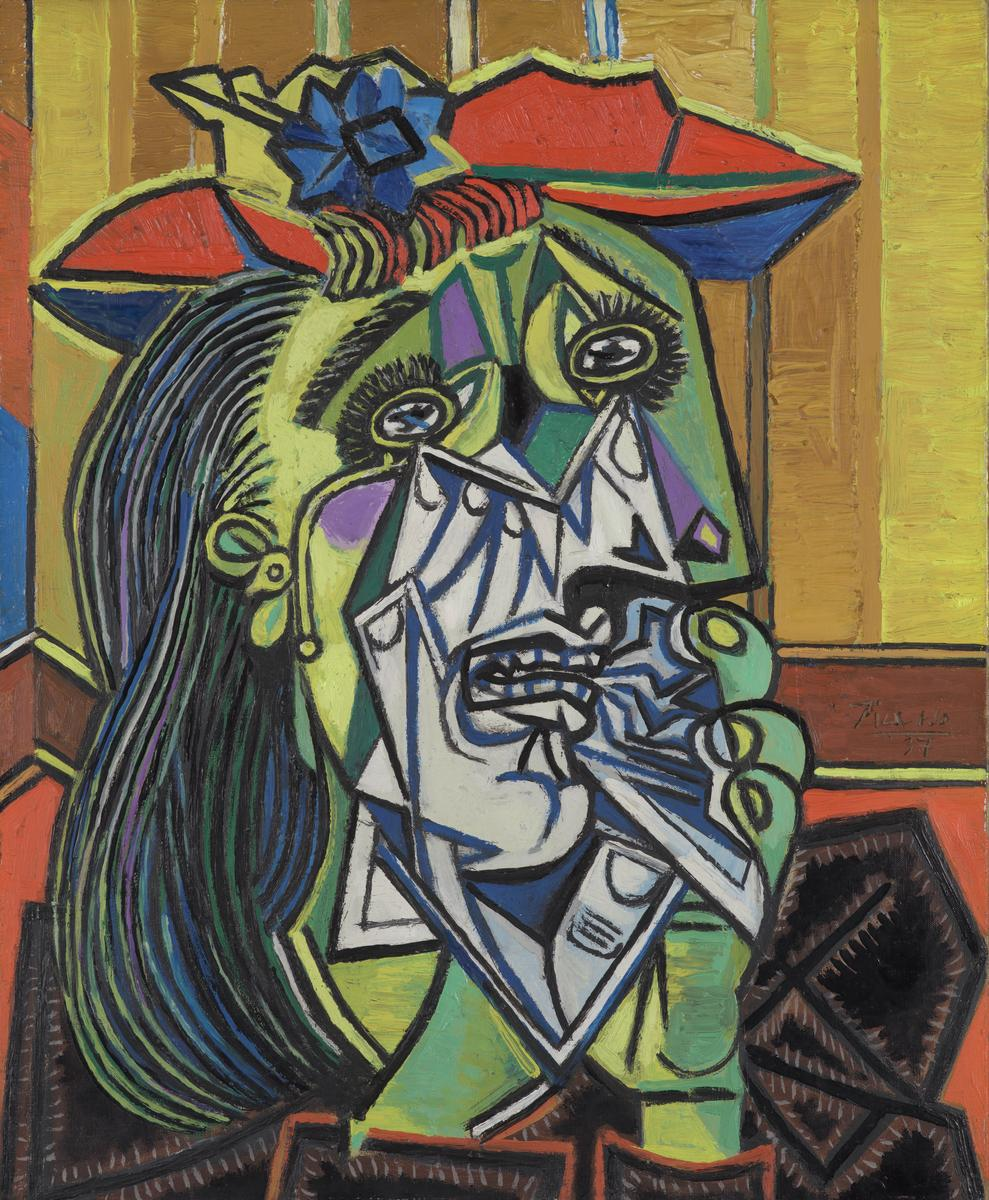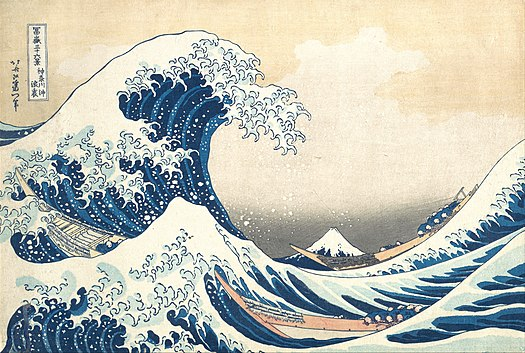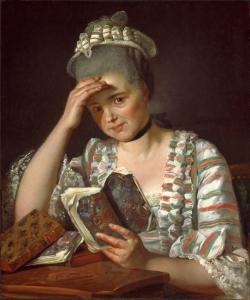Early Modern Art Blog
American Gothic 1930 - Grant Wood
Grant Wood was an American painter and mostly focused on the representation of regionalism. He mostly known for his paintings of the rural American Midwest. American Gothic is the painting that made him famous and became an example in the early 20th-century American Art.
In 1930, Grant Wood an American painter that was driving around Eldon, Iowa looking for a inspiration. He noticed the Dibble House, which he thought was a flimsy farm house with gothic church style windows. The couple in the painting were created from Wood in what he thought the kind of people should live there. Wood used his sister and the woods family dentist to style the painting after. In the painting the house behind the couple is a real look alike of what the Dibble house looks like. The women is wearing a apron with rickrack that is used to better reflect the time period on a farm. The three pronged pitchfork is also in the mans overalls, the gothic style window and in his face. Some of the elements used in this painting are dimension, detail and repetition. The repetition is represented by the repeating pitchforks that show up in different parts of the painting.The Weeping Women 1937 - Pablo Picasso
Pablo Picasso was a Spanish painter and sculptor who spent most of his adult life in France. During the 20th century, Pablo's style changed to trying different techniques and ideas, he wanted his painting to stick out and stray away from the norm.
The weeping Women was created in 1937. The supposed story of this painting is based on a women holding her dead child. Picasso painted this during the Spanish Civil War. The women lost her child to a bombing in the town of Guernica. The attack was done in April of 1937 by Nazi Germany. Some of the elements that can be found in this painting would include texture, shape, composition and pattern. The texture of this painting leads into dimension as well as the texture gives the paining better dimension. The shapes are mostly triangular and continuously used throughout the painting. The different sizes of shapes make the painting unnatural and it resembles shards of glass. The composition in the painting is suggesting that Picasso wanted his audience to focus on the women's face and the pain that she felt.
Shell No. 1, 1928 - Georgia O'Keeffe
Dr. Beth Harris and Dr. Steven Zucker, Harris, D. B., & Zucker, D. S. (n.d.). Grant Wood, American Gothic. Smarthistory. Retrieved April 27, 2023, from https://smarthistory.org/grant-wood-american-gothic/
Number one, 1950 (lavender mist) by Jackson Pollock. (n.d.). Retrieved April 28, 2023, from https://www.jackson-pollock.org/lavender-mist.jsp
Tate. (1970, January 1). 'weeping woman', Pablo Picasso, 1937. Tate. Retrieved April 28, 2023, from https://www.tate.org.uk/art/artworks/picasso-weeping-woman-t05010
What is Mid Century modern? Mid Century Modern Groovy. (2015, August 31). Retrieved April 26, 2023, from https://www.midcenturymoderngroovy.com/?page_id=27
Wikimedia Foundation. (2023, April 28). Georgia o'keeffe. Wikipedia. Retrieved April 28, 2023, from https://en.wikipedia.org/wiki/Georgia_O%27Keeffe
Wikimedia Foundation. (2023, March 7). American Gothic. Wikipedia. Retrieved April 27, 2023, from https://en.wikipedia.org/wiki/American_Gothic





Comments
Post a Comment